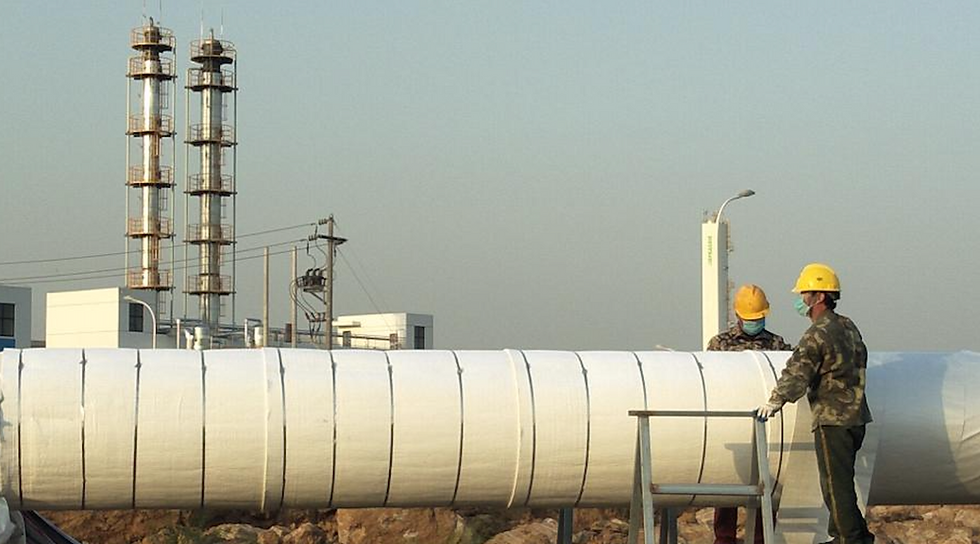How to Identify Superior Silica Aerogel Blankets and Avoid Costly Mistakes
- Raj Arya
- Jul 27
- 3 min read
Silica Aerogel blankets are renowned for their industry-leading insulation properties—offering dramatically lower thermal conductivity compared to traditional materials like mineral wool or ceramic felts. However, a recent price crash by some Chinese vendors—dropping prices from $24 to $12 per m² for 10mm thick aerogel blankets—raises eyebrows and, more importantly, concerns about quality.

Why the Sudden Price Drop in Aerogel Sheets?
At first glance, such steep discounts might seem like a bargain. But the underlying cost of silica aerogel powder has not similarly dropped, which suggests corners are being cut elsewhere. In reality, the quality of an Superior Silica Aerogel Blankets is determined not just by the raw aerogel content, but also:
The blend and quality of aerogel powder used
The type and integrity of reinforcing fibers
Manufacturing process and consistency
The Catch: Narrow Performance from Cheap Aerogel
Cheap aerogel blankets can mimic high-performance insulation—but only within a very narrow temperature range (typically 2°C to 80°C). As the temperature rises, differences in quality become prominent:
Low-grade aerogel with weak reinforcement loses performance rapidly above 80°C.
At elevated temperatures (100°C and above), these cheap products can perform just as poorly as mineral wool or ceramic felts.
In some of our own lab tests at Wedge India, we found several imported samples performing worse than ceramic paper, especially at higher temperatures.
Why Not Just Use Mineral Wool or Ceramic Felts?
Once aerogel's edge is lost at higher temperatures, it makes no sense to pay a 5-6x premium for aerogel blankets when mineral wool or ceramic felts deliver comparable or even better performance in those ranges.

How to Judge Superior Silica Aerogel Blanket Quality (A Practical Checklist)
If you’re serious about reliable insulation, never rely just on vendor claims or technical datasheets. Here’s what you should do:
Request a 3rd Party Test ReportAlways demand an independent report, specifically with:
Thermal conductivity tested at minimum 4-5 temperatures:
25°C
100°C
200°C
300°C
400°C
Compare the Temperature Curves
Plot the reported thermal conductivity vs. temperature for all samples.
High-quality aerogels show low, stable conductivity across the entire range.
Low-quality aerogels have conductivity that rises sharply above 80°C—becoming similar to traditional insulation.
Check for Reinforcement and Fiber Type
Ask for details on fiber reinforcement. Weak, cheap, or poorly bonded fibers dramatically affect long-term stability and performance.
If in Doubt, Get It Tested
At Wedge India, we have tested more than 12 variants, with some demonstrating catastrophic loss in performance at high temperatures.
For peace of mind, consider getting your samples tested at independent or accredited labs. We have in-house capabilities at our Faridabad facility if you need help.

Final Thought
Cut-rate aerogel blankets may offer initial savings, but they rarely deliver the performance you expect above 80°C. For true value and industrial-grade insulation, choose products with credible, temperature-verified test data. Don’t just chase the lowest price—insist on proof.
For those seeking rigorous product evaluation, feel free to contact us to arrange for real-world lab testing of your aerogel blankets.
Silica Aerogel is a premium material for critical insulation needs. If you compromise on quality, you compromise your entire thermal management system.
💡 If the performance is similar to mineral wool, then you might as well just use mineral wool — at one-fifth the price.
Choose wisely. Buy tested. And if in doubt — get it tested at Wedge India.
📩 Want to Test Aerogel Sheet Quality?
Contact us at info@wedge-india.com
or visit 👉 www.wedge-india.com


Comments